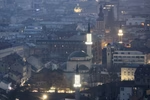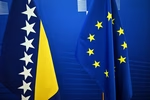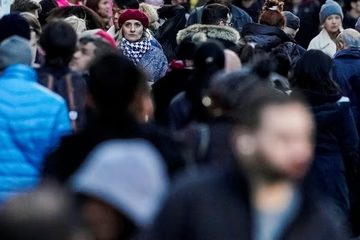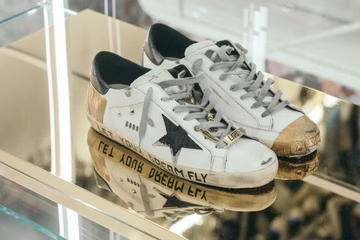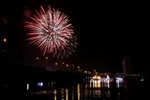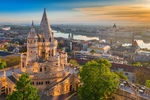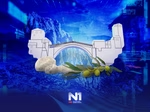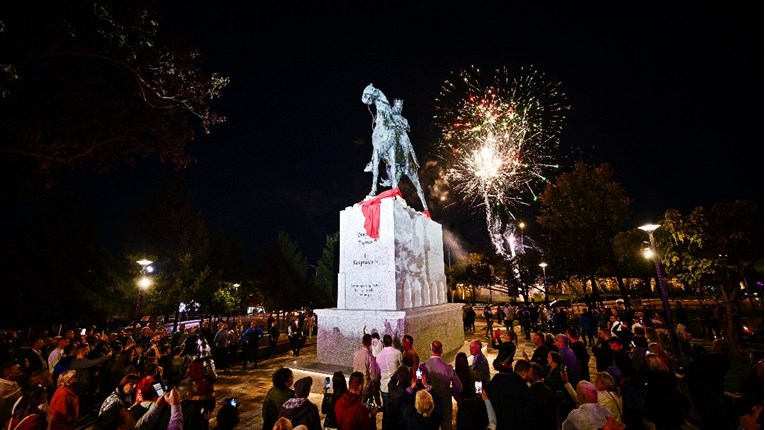
On Wednesday, the local authorities in Banja Luka unveiled a monument dedicated to the medieval Bosnian king, Tvrtko I Kotromanic, in a symbolic and politically charged move. The unveiling was leveraged to promote a narrative that his reign serves as proof that Bosnia and Herzegovina has historically been a "Serbian land."
Drasko Stanivukovic, the ambitious mayor of Banja Luka, timed the monument’s unveiling to coincide with his campaign for the upcoming local elections, scheduled for October 6, where he seeks another term. The event was marked by a grand ceremony, including fireworks and a number of high-profile guests.
“Erecting a monument to Tvrtko I Kotromanic means laying the foundation of Serb history, culture, and tradition in the heart of Banja Luka,” Stanivukovic stated during the unveiling. He also put forward the theory that Tvrtko was “undoubtedly a Serb king, as he was crowned at the Mileseva Monastery in Serbia.”
"Serb character to Bosnia and RS"
Stanivukovic emphasized that through this act, “we are giving Bosnia and Herzegovina and the Republika Srpska a Serb character since Tvrtko was a Serb ruler crowned in Mileseva according to the Nemanjic ritual.”
However, historical facts present a more nuanced picture. Tvrtko I Kotromanic was actually crowned king of Bosnia in 1377 in the town of Mile, near present-day Visoko in central Bosnia, by the head of the Bosnian Church. While at the peak of his power, Tvrtko did carry the title “King of the Serbs,” it referred to the territories he annexed to Bosnia between 1373 and 1377, rather than an ethnic identity in the modern sense.
Tvrtko’s heritage is complex, with ties to both the Croatian ruling family Subic and the Serbian Nemanjic dynasty. According to the Croatian Encyclopedia, by the summer of 1390, Tvrtko had also conquered the cities of Split, Trogir, and Sibenik, as well as the islands of Brac, Hvar, and Korcula, assuming the title “King of Raska, Bosnia, Dalmatia, Croatia, and the Littoral.”
The figure of Tvrtko I has also become a rare symbol linking Banja Luka and Sarajevo, as both cities have erected monuments in his honour. Last year, a monument to Tvrtko was unveiled in Sarajevo. Unlike the one in Banja Luka, the Sarajevo statue’s pedestal, created by sculptor Stjepo Gavric, bears the inscription “Bosnian King.”
Complicated monument placement
The process of erecting the Sarajevo monument, however, was fraught with complications. The city centre of Sarajevo is a protected historical site, and any interventions require approval from the state commission for the protection of national monuments. A Serb member of the commission withheld consent, stalling the project.
In a creative workaround, Sarajevo Mayor Benjamina Karic placed the monument on a sidewalk across from the Presidency of Bosnia and Herzegovina, after securing temporary approval from the Centar municipality for a period of 99 years.
“I promised that our Sarajevo would receive a monument to the Bosnian king, Tvrtko I Kotromanic, and today, on the anniversary of the signing of the Charter of Kulin Ban, I fulfilled that promise,” Karic wrote on social media in August last year. In contrast to the grand spectacle in Banja Luka, the Sarajevo monument was quietly installed overnight, without fanfare.
Kakvo je tvoje mišljenje o ovome?
Učestvuj u diskusiji ili pročitaj komentare





 Srbija
Srbija
 Hrvatska
Hrvatska
 Slovenija
Slovenija




























